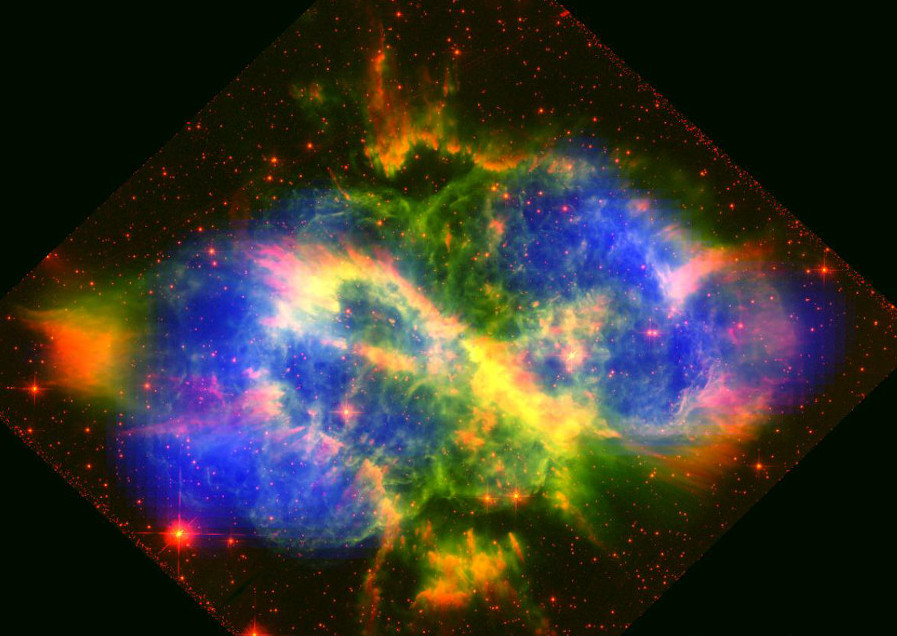
 Credit: J.A. Toalá, R. Montez Jr and M. Karovska and ESA
Credit: J.A. Toalá, R. Montez Jr and M. Karovska and ESA
Death Throes
Stars like the Sun have long lives, lasting almost unchanged for billions of years, pouring out light and heat to interstellar (and interplanetary) space all that time. Eventually, though, stars run out of nuclear fuel. When this happens, things take a turn for the worse. The star's outer atmosphere is ejected in a series of pulses, forming structured nebula extending far out into space. These "planetary nebulae" (a bit of a misnomer, since they actually have no physical connection to planets) form some of the most beautiful objects resolvable by ground-based telescopes, reminding skygazers of eskimoes, cat's eyes, ants, and other strange morphologies. The burned out stellar core, an earth-sized, dense chunk of carbon called a "white dwarf", usually lies at the center of the nebula, and, supported by strange effects of quantum mechanical social distancing, eventually cools into an earth-sized diamond. A new observation by the XMM-Newton X-ray observatory of the so-called "Spiral Planetary Nebula" (or, astronomically, NGC 5189), reveals that not all such white dwarfs go gentle into that good night. The image above compares an X-ray image from XMM to optical images from the Hubble Space Telescope. This composite image reveals hot bubbles of million-degree X-ray emitting gas inside cavities bounded by walls of cool gas. Such hot gas is usually only seen in very young planetary nebulae, not older systems like NGC 5189. The XMM data suggest that, very late in its evolution, the central star underwent a violent pulsation. This "death throe" threw off a large amount of carbon-rich material from the dying star, which eventually collided with the pre-existing walls of the cavity, heating the gas to millions of degrees. This observation, and others like it, helps clarify how stars like the Sun eventually die and give enriched material back into their host galaxies.
Published: March 30, 2020
<
HEA Dictionary ● Archive
● Search HEAPOW
● Other Languages
● HEAPOW on Facebook
● Download all Images
● Education ● HEAD
>

Each week the HEASARC
brings you new, exciting and beautiful images from X-ray and Gamma ray
astronomy. Check back each week and be sure to check out the HEAPOW archive!
Last modified Tuesday, 27-Feb-2024 10:10:12 EST


